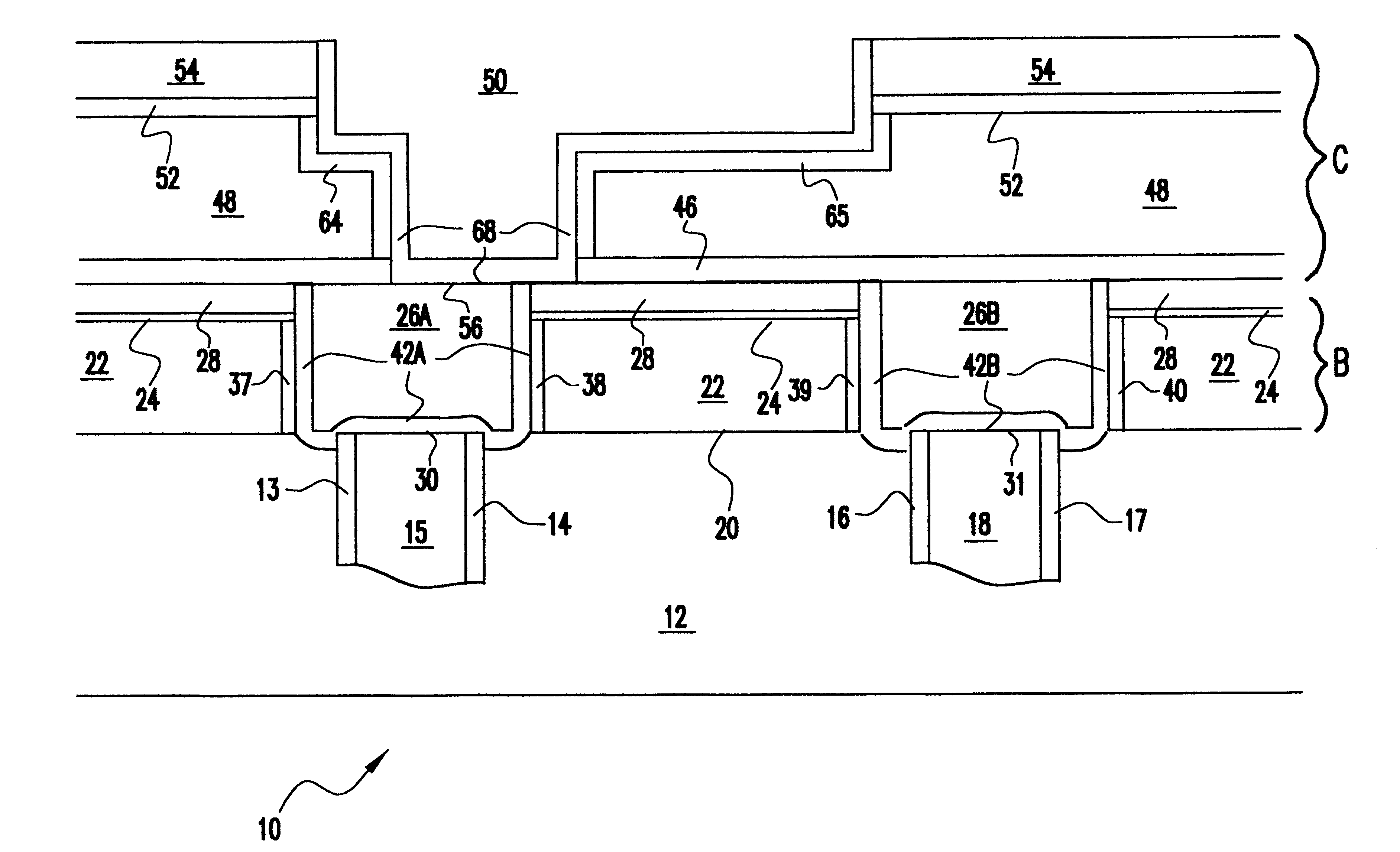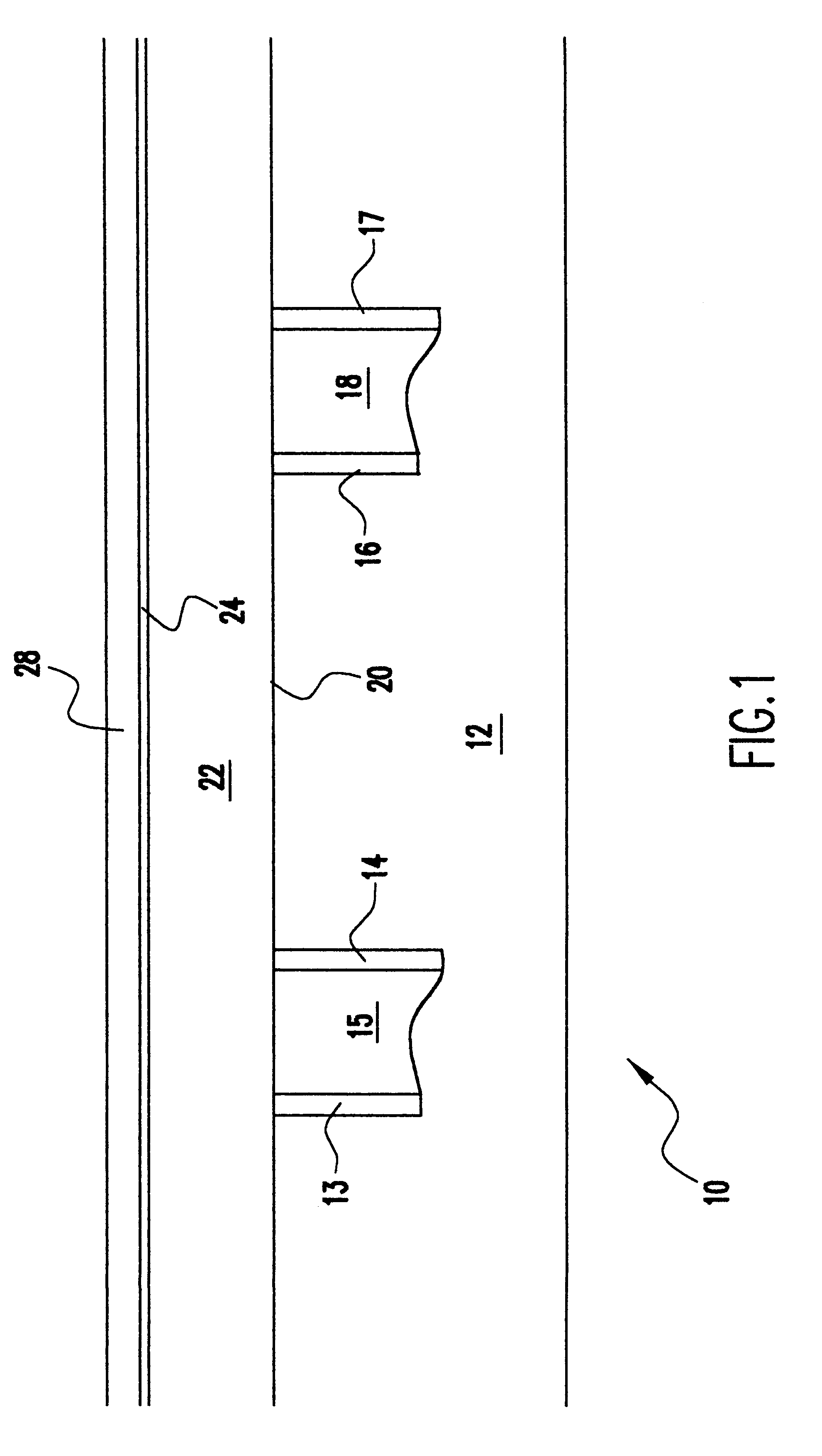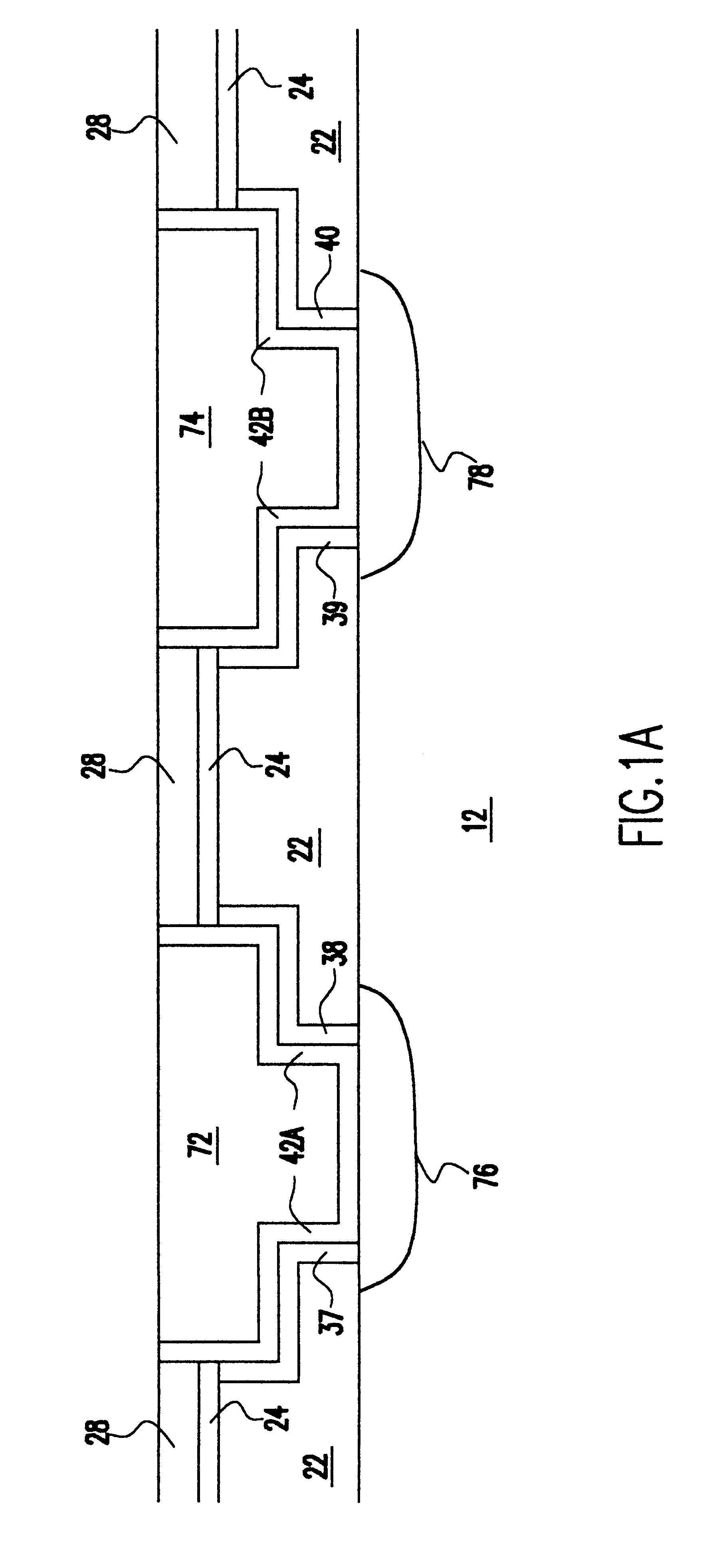Dual damascene flowable oxide insulation structure and metallic barrier
a flowable oxide and damascene technology, applied in the field of flowable oxide (fox) layers, can solve the problems of rapid propagation cracks from relatively minor physical damage, unprotected fox materials are not generally considered suitable for formation of layers, and most fox materials are readily attacked
- Summary
- Abstract
- Description
- Claims
- Application Information
AI Technical Summary
Benefits of technology
Problems solved by technology
Method used
Image
Examples
Embodiment Construction
Referring now to FIG. 1, there is shown a cross-sectional view of an integrated circuit chip 10 having devices such as transistors, capacitors and underlying connections (not shown) formed thereon. At the bottom of the circuit chip is a substrate 12. The substrate is formed of Boron Phospho-Silicate Glass (BPSG) or Phospho-Silicate Glass (PSG). The substrate 12 defines exemplary stud walls 13 and 14 of a first stud 15 and stud walls 16 and 17 of a second stud 18. The studs are in communication with the underlying electrical connections. The number and location of the studs are determined as a matter of integrated circuit design and are unimportant to the practice of the invention in accordance with its basic principles. After a stud or plurality of studs are formed, a substrate surface 20 of the substrate 12 is planarized by a known method such as polishing, however other methods suitable to planarize a surface of a substrate can also be used.
After the substrate surface 20 has been ...
PUM
| Property | Measurement | Unit |
|---|---|---|
| thick | aaaaa | aaaaa |
| thickness | aaaaa | aaaaa |
| thickness | aaaaa | aaaaa |
Abstract
Description
Claims
Application Information
 Login to View More
Login to View More - R&D
- Intellectual Property
- Life Sciences
- Materials
- Tech Scout
- Unparalleled Data Quality
- Higher Quality Content
- 60% Fewer Hallucinations
Browse by: Latest US Patents, China's latest patents, Technical Efficacy Thesaurus, Application Domain, Technology Topic, Popular Technical Reports.
© 2025 PatSnap. All rights reserved.Legal|Privacy policy|Modern Slavery Act Transparency Statement|Sitemap|About US| Contact US: help@patsnap.com



